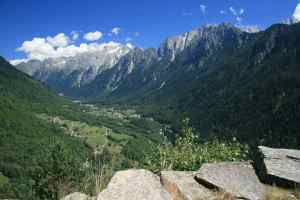I thought long and hard about this topic and while I’m still far away from having a coherent position on what has been going on in the Middle East during the last few days – lacking both the knowledge on the historical background, details on current events and experience on the ground – I have come to a conclusion on one part of the problem. So here’s the position:
Unless you have just lost a loved one – in which case it is understandable that this pain would overrule almost anything else – this should be the appropriate response upon hearing that an “enemy” civilian has been killed. I would want to extend this to enemy combatants, but that’s probably asking for humans to act like angels or saints.
You should feel a deep sense of grief about the fact that a human being will never rise up again, will not grow old, will never talk to her friends again and will never again be able to do all those things you and I enjoy doing. You should empathize with the pain of his mother, son, grandfather, or spouse who will never be able to hold his hand again or apologize for the bad words they might have exchange only a few hours earlier. You should realize that, had God, fate or just pure luck decided otherwise, it could have hit you or your closest friend.
Your first reaction should not be “but it was her fault because she supported this oppressive / terrorist government”, nor “but if the enemy government didn’t hide behind civilians / didn’t implement its oppressive policy, this wouldn’t have happened in the first place”, nor “oh but I’m quite sure he wasn’t a civilian but a militant / soldier in disguise” or any such justification.
In fact, if your reaction is the latter, I am not sure if we are still friends.
I am not saying that killing can never be justified. It probably can. I am not saying that the expression “collateral damage” is always hypocritical. Ultimately, all politics is weighing one life against another. But if this cannot be avoided, then what might matter is the attitude with which we approach human suffering.
You might think that a henchman (and, by extension, his supportive or at least inactive audience) shedding tears over his victims is sanctimonious. But I still prefer him over the madly laughing joker or the butcher who justifies his deeds by denying his victims their humanity.
Post Scriptum: Or maybe you think that this is trivial. So let me give you an non-trivial example: posting a picture about a dying Palestinian / Isreali child/civilian. So you think this is non-controversial, right?
I say it depends. If you post this picture to raise attention to the human suffering caused by the conflict, then it may well be. If you post it with the intention of telling everyone how right you were to hate the Israeli / Palestinian government because they kill innocent people, you might want to think about the ethics of using human suffering to make yourself feel better about yourself and your side.


































